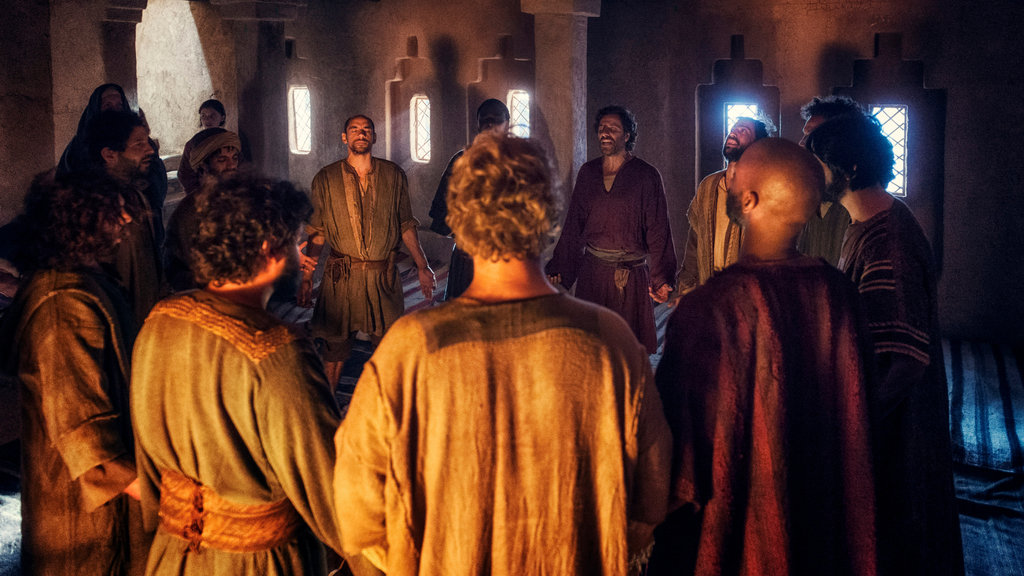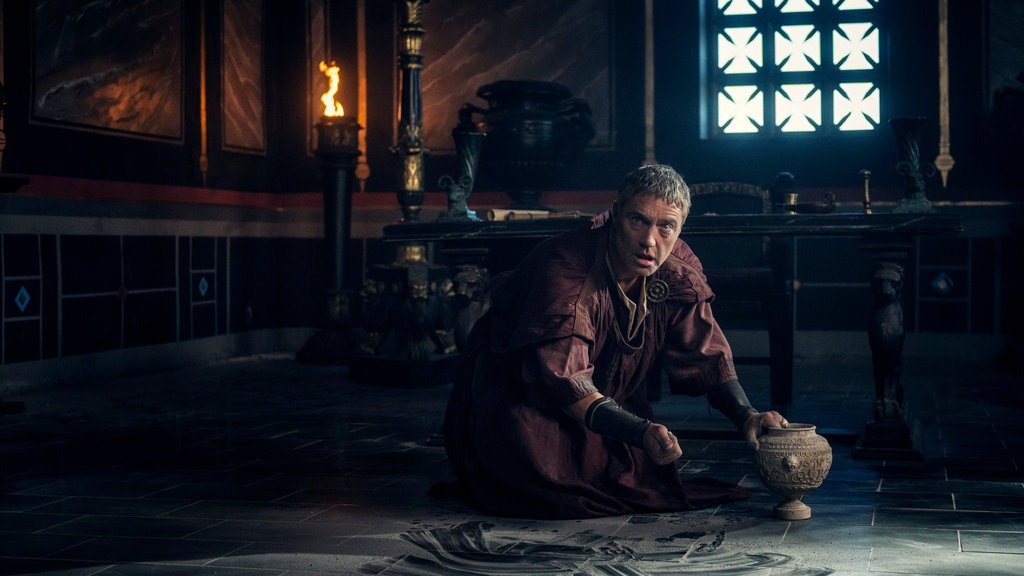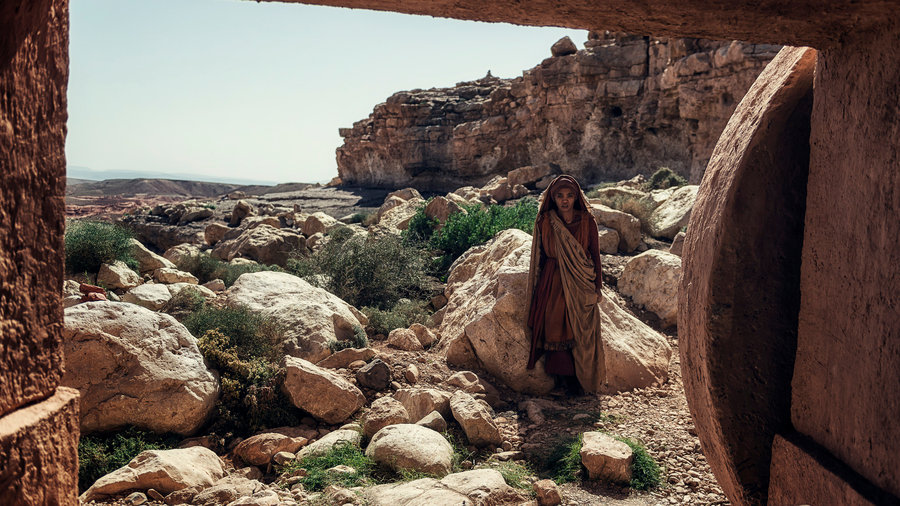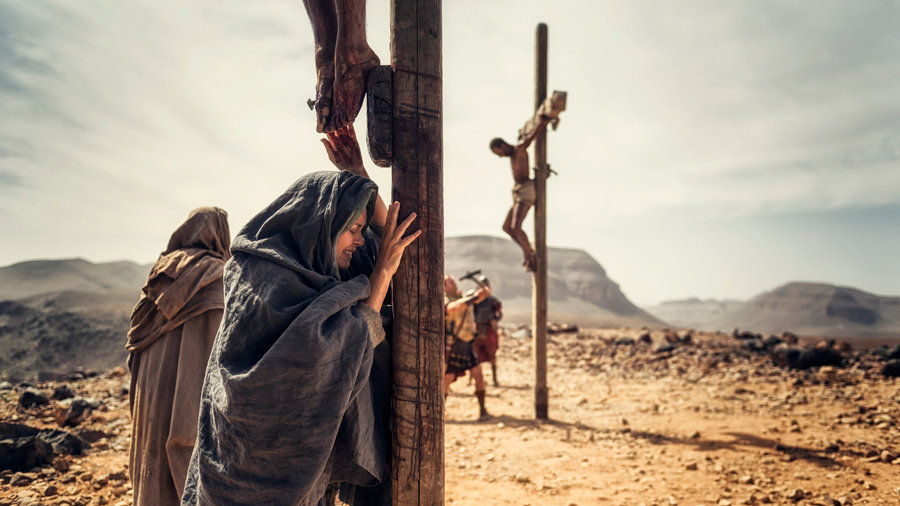
Observations
What would it look like if Acts 1:12-4:4 were compressed into a single hour-long (with commercials) TV episode that covered just a few days? It might look this episode three, which was broadcast tonight.
This episode was much more about political intrigues and machinations going on outside the biblical text. The portrayal of Pilate may be fictional and imagined, but what is shown in this episode does seem to align with what is known historically about his tendency to ignore Jewish sensibilities; a short temper; and to take unilateral, violent actions against the Jews. Less seems to be known about Caiaphas and Herod Antipas, and their portrays are likely more fictional and imagined than Pilate’s.
My evaluation of episode three is that is falls somewhere in the “decent” range. There was one major omission (IMO) noted below, and a few other issues also noted below. I think it portrayed well the tensions that could very well have existed between the various groups: the Romans, the priests, the rest of the Jews, the Zealots, and the disciples. In many ways, all the groups except the disciples, are quite the same. All except the disciples are interested in self-preservation and will use whatever means is necessary to try to achieve it. Only the disciples are shown as acting against self-preservation. They must fight this urge, but in the end their commitment to Jesus overcomes their fears. They would be safer to retreat to Galilee and return to their old occupations. But they choose to remain in Jerusalem and await the promise of the Holy Spirit and to whatever and wherever that leads.
Motifs
Women continue to play an important part in the narrative. Where episode two seemed to push them into the background, episode brings them back into the foreground. A new female character, Maya, Peter’s daughter, is introduced. She, like all the other female characters in this program, is feisty and strong and has a mind that she is willing to use and speak.
Politics and religion continue to drive the drama. The Romans and the Jewish leaders are fully entangled in this web. There is pressure among the disciples to escape entanglement through escape into anonymity and noninvolvement in the way that Jesus has commanded. The disciples are seen as victims of these external, powerful forces that are beyond their control. The developing story is to see how they navigate the delicate balance between engaging in the world without becoming entangled in its powers.
Another developing motif is that no individual, however much power and authority they wield, is fully in control. In fact the more power they wield, it seems that in the end they have less control.
Quibbles
The title of this series is A.D. The Bible Continues. However, this episode, in comparison with the first two, seems to contain less biblical material and takes more liberties with the material it uses.
Where are Jesus’ brothers that are written to have been present with the disciples in the Upper Room? Acts reports there were at least one-hundred twenty by the time of Pentecost, but throughout the episode, it is the disciples, Mary the mother of Jesus, Mary Magdalene, and the new (fictional and imagined) arrival, Maya.
Judas is forgotten. There is nothing about his replacement taking place.
There is very little made of the “speaking in tongues” after the Holy Spirit arrives. The viewer might see it as the recitation of the Lord’s Prayer changes into what might be speaking in tongues. But by the time the disciples go out of their room into the crowd, they are no longer speaking in tongues. The whole mystical, miraculous, and unexplainable event of the disciples speaking to the multinational crowds in Jerusalem is omitted. I see this as the worst omission of this episode. The key theme of Christianity as a gospel for all the nations is sadly omitted. For now, in this program, the gospel is still one that is confined to the Jews. The outpouring of the Spirit is primarily to give the disciples courage to leave their room. Given the title of this episode, “The Spirit Arrives,” I would have expected much more surrounding the event, and closer adherence to the text of Acts.
Peter’s first sermon, recorded in Acts 2 is not found in the program.
What does happen is that the first action of the disciples is to go to the Temple and encounter the cripple at the Beautiful Gate. This is the episodic selection that the program uses. It combines a miracle/healing event with Peter’s preaching to the crowds, with the religious authorities confronting them and taking them into custody. A lot of time and story compression occurs, but I suppose that the episode the producers chose does encapsulate the highlights.
No one speaks out against the violence that is happening, as was the case in the first two episodes. However, it could be said that the acts of violence being initiated by Pilate and Boaz might themselves be arguments against any redemptive nature of violence. Boaz himself speaks of his actions as “the way of the world. Blood will have blood."
Synopsis
Starts in Galilee. Peter looking at his daughter, wondering how he is to tell them he must return to Jerusalem. Peter and John return to Jerusalem. His daughter sees them leave.
Back to Jerusalem. Caiaphas speaks with a widow of one of the temple guards who had been killed. Leah enters. Caiaphas thinks the widow suspects something. Six of the priests have been murdered by Pilate. Leah is matter-of-fact about the murder. It had to be done to erase witnesses of the resurrection. "It is a necessary sacrifice."
Streets of Jerusalem. Roman squad drinking at an establishment. Boaz is one of the staff. Romans are a bit drunk. Proprietor encourages them to take leave. One bumps into Boaz. A tense standoff. Roman starts to draw sword. Proprietor comes to calm him down and stands between them. As the Romans leave, Boaz draws out a knife. Proprietor tells Boaz that it is not yet time.
To the Praetorium. Servant cleaning up blood from earlier executions of guards. Claudia comes in and asks Pilate what has happened. "Just politics." Claudia demands to know what happened. She knows what has happened. Pilate changes subject: Herod and his wife are arriving for a visit.
Jerusalem. Herod arrives. Boaz looking on. Herod thinks he sees more Roman soldiers in the streets since Jesus' crucifixion. The procession stops. He demands that the king must be allowed through. The Romans refuse. Herod and entourage are diverted away from the main path.
Herod arrives at Caiaphas' residence. Herod asks what is going on in the city. Herod accuses Caiaphas of mishandling Jesus, of breaking Jewish law, and collaborating with the Romans. Herod is afraid of what might happen at Pentecost with all the pilgrims arriving for the festival.
Upper Room. Peter and John arrive and join other disciples already there. They discuss how Jesus intends to build the church. Mary, mother, states there are two ingredients, belief and patience, both which are lacking among them. Knock at the door. Mary Magdalene and Maya, Peter's daughter are there.
Caiaphas and Herod walk through the temple area. Herod demands a peaceful Pentecost. His positions is secure, but Caiaphas' is dependent on his support and that of the Sanhedrin.
Herod reaches temple gates where there is a cripple beggar. Herod orders Caiaphas to give the beggar some money.
Leah visits the aforementioned temple guard widow and hands her some coins. She would like to come to some kind of agreement outside of official temple protocol, in which annual income will be provided. But the widow is skeptical. She knows her husband was respected and his last post was guarding Jesus' tomb. She wants to know what is going on. The widow must leave Jerusalem immediately to avoid the same fate as her husband. Leah will take care of all their needs.
Praetorium. Pilate, Herod, their wives. Discuss the festival of Pentecost. Herod observes that excessive Roman presence around the Temple do not contribute to the feeling of Roman tolerance. It re-emphasizes the perspective that they are an occupied nation. Herod requests that the Romans be taken away from the Temple area so that the Jews could celebrate the festival in peace. Pilate reminds Herod that Jerusalem is not Herod's city. As a response, Pilate will double the guards and he will attend Pentecost himself. Herod asks Claudia to intervene. Claudia replies that she supports her husband in all he does.
Back to upper room. Peter and Maya. Discussion of what they expect to happen. Peter fears for his daughter's safety. She wonders what could be so dangerous about following a rabbi.
Pilate discuss his visit to the festival. Claudia questions his wisdom.
Upper Room. They are all inside, waiting. Some wonder whey they will go out. They question why they are shut away. They are waiting for the Holy Spirit. Maya questions all their waiting and not going out to tell people about Jesus' resurrection. Peter is annoyed with Maya's questions. Maya rebuffs him saying he's the one who taught her to question things.
Boaz receives a report that Pilate will visit the temple on Pentecost. The messenger thinks this is the abomination of the sacred space that the prophets had spoken of. Boaz believes the time has come to kill Pilate. Looks at knife.
Claudia enters Pilate's bedchamber. Claudia encounters Herod. He tells her this was the palace of his father before they took it. Claudia encounters Cornelius. They cannot sleep because of worries about Pilate's safety.
Upper room. Maya asks whether the disciples will face the same fate as Jesus if they are found.
Herod informs Caiaphas that Pilate will be coming to the Temple. They are all concerned. Boaz prepares for a showdown.
Peter on rooftop. Maya comes up to see him. Peter is afraid. Not of the Romans or priests, but that he is the wrong person for the task Jesus wants him to do. Maya asks what Jesus would do if he were still here. Peter answers, "He'd pray." They head down and wake all the disciples. They are going to pray.
Pentecost morning. Pilgrims entering the temple. Roman procession enter. Rear guards prevent further entry of pilgrims. Upper Room: the disciples pray. Boaz preparing his weapons and approach the temple.
Camera shows glow, comet-like object coming down from the heavens. Clouds and storm gather about the upper room. A strong wind is followed by a stream of light and flames that envelop the disciples. The Holy Spirit has arrived. They are now ready to leave to spread the gospel.
Pilate and Cornelius arrive at the temple. Temple guard arrives to give Caiaphas's demands for entry to the Temple. Pilate refuses. They enter. Boaz is seen among the crowd.
Peter leads the disciples out of the building. They greet the curious crowds about. They head toward the Temple.
Caiaphas and Herod come out to greet Pilate. In Aramaic, Caiaphas calls out to the crowd to accept Pilate's visit. Romans spot Boaz and give chase as they also lead Pilate away. Boaz attempts to attack Pilate, but is foiled by Cornelius. Another soldier gives chase and as Boaz is about to be apprehended, using a wrist-based dagger slices the Roman's throat.
The disciples approach the Temple gate. The same beggar is there. Peter stops. He tells the beggar they have no money, but taking his hand Peter offers healing in the name of Jesus Christ. The cripple is healed. Peter gives his "sermon" about Jesus, resurrection, and the Holy Spirit. John announces, Jesus is alive.
Caiaphas hears and orders the guards to silence the disciples. Peter and John are beaten, then taken into custody.
Cornelius comes to Pilate to report that a soldier was found murdered. Some in the area were taken into custody. Pilate orders them to be executed. Cornelius does not believe the murderer is among them. Pilate doesn't care and orders all of them to be executed on the steps of the Temple. Cornelius goes out.
Mary Magdalene comes to the holding cells with some supplies. She reports that word is spreading and that many are coming to Christ. Roman soldiers come to take others in custody to be executed. Cornelius looks into Peter's eyes as he leaves. Jews are executed. Caiaphas and Herod come out to see the results. Crowd is antagonized.
Boaz shows no regret or remorse for his actions. It is simply "the way of the world. Blood will have blood."
Peter and John pray in their cell. Caiaphas comes to see. Peter and John recite the Shema while he looks on.








 A series cannot talk about Jesus without discussing Mary Magdalene. Who was she? She is one of the most misunderstood characters in the Bible. Certainly devoted to Jesus. Wife of Jesus? A prostitute? The very first Christian?
A series cannot talk about Jesus without discussing Mary Magdalene. Who was she? She is one of the most misunderstood characters in the Bible. Certainly devoted to Jesus. Wife of Jesus? A prostitute? The very first Christian?